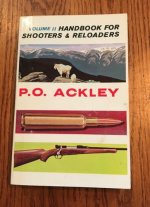I think a number of folks answered the question quite clearly...so I may not understand what you are asking. If you don't mind, humor me and ask the question again....just the question.
First off, I edited my title to bullet brand from bullet weight since brand seems to be the issue that the gent was having issues with.
In one case the gent developed what he considered to be a safe and accurate load with a Hornady, Nosler or Berger bullet. By simply substituting a Sierra bullet of the same caliber and weight, that "safe" load now causes a blown primer. So how can that be, unless it's pure coincidence that the primer was defective? I've posted here what he posted on another site, so essentially we all have the same info. I'm well aware that changes in components/technique can cause changes in pressure, but I don't buy that swapping one bullet for another would be enough to blow a primer. Sorry, but I don't agree that an explanation for THAT much difference in pressure for such a trivial change has been provided, esp. one based on someone's actual experience so we can just let it rest.
I'm going to load some otherwise identical rounds with both Hornady and Sierra bullets, but my guess is that there will be no noticeable differences when I shoot them. I'll try to get some pics of the fired cases. If there's anything worth noting I'll mention it here.
Again, here is his response to my comment that as long as bullets are of the SAME caliber and weight that their brand doesn't matter. You might have a different view of what his issue is. Or what the "some reason" is.
"And a 120gr bullet is not a 120 gr bullet.
Meaning if you use a Hornady, and find a load you like, chances are you'd be over pressure if you load up a Sierra.
For some reason Sierra always uses a lower powder charge in all my rifles."


